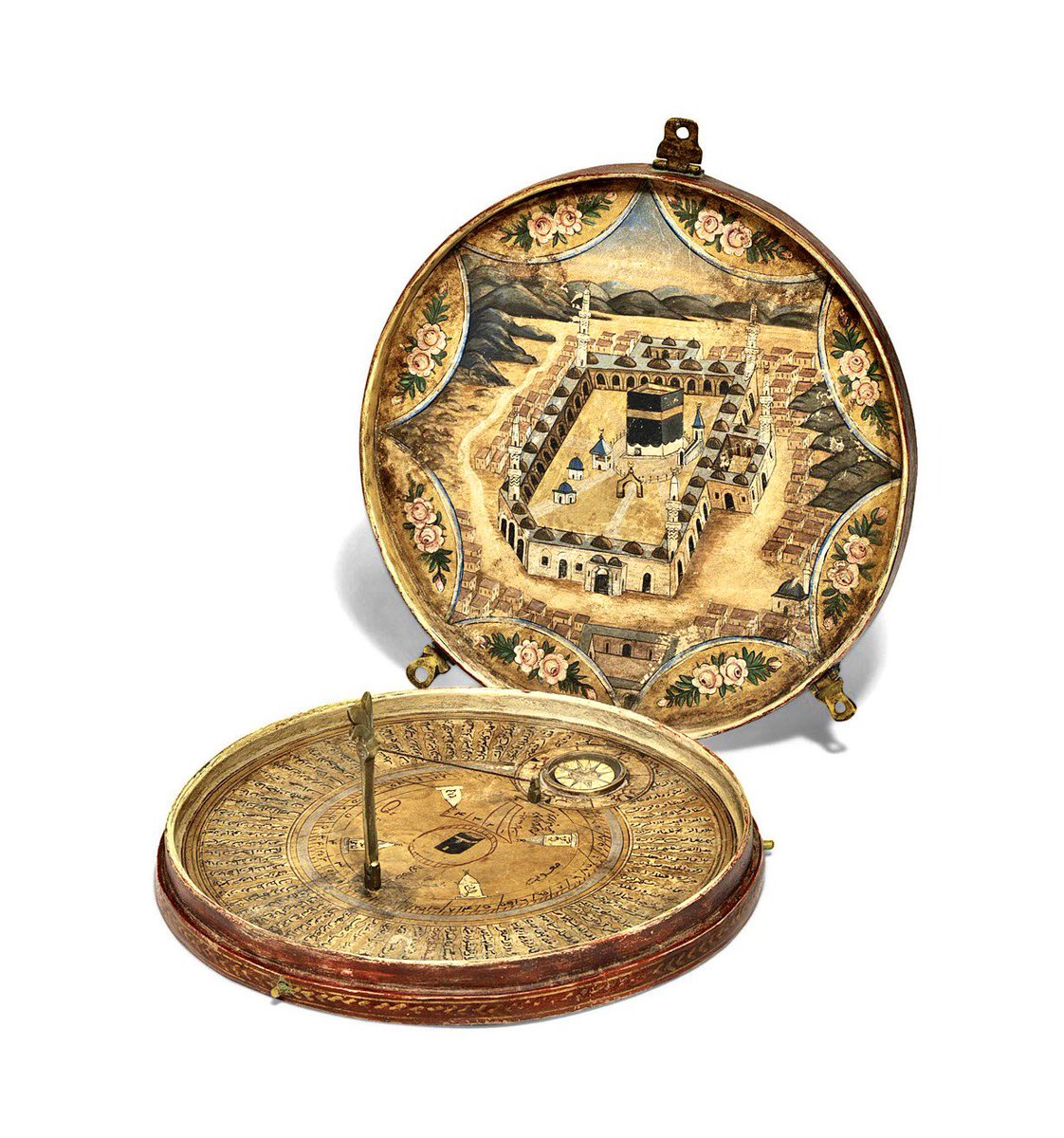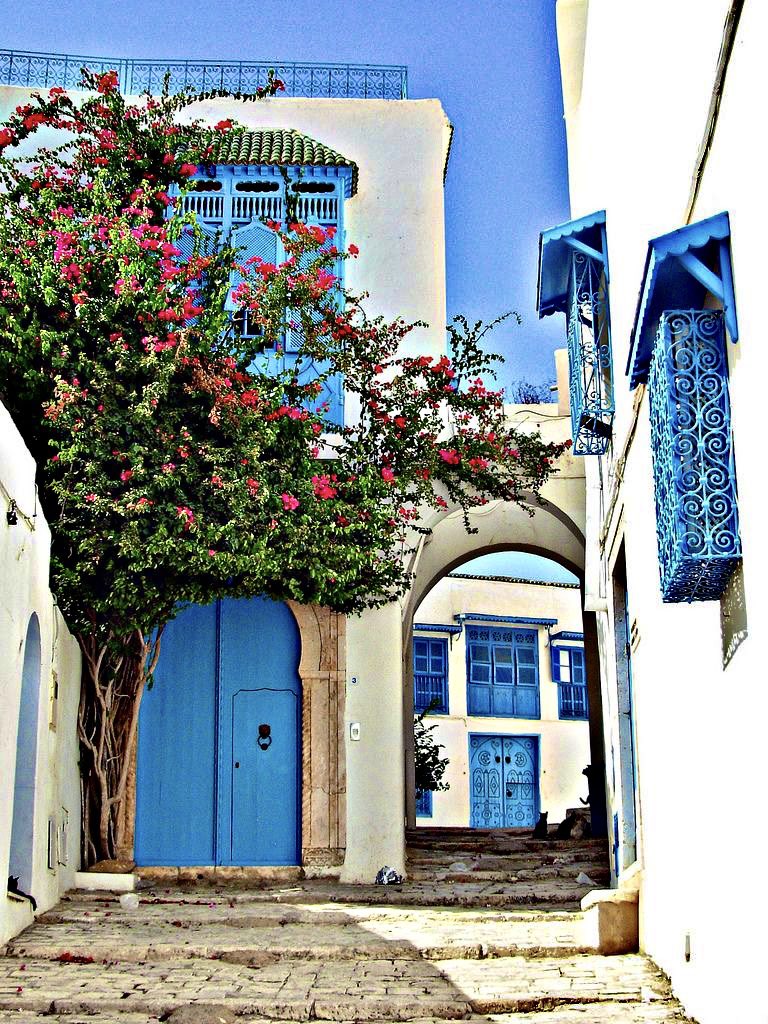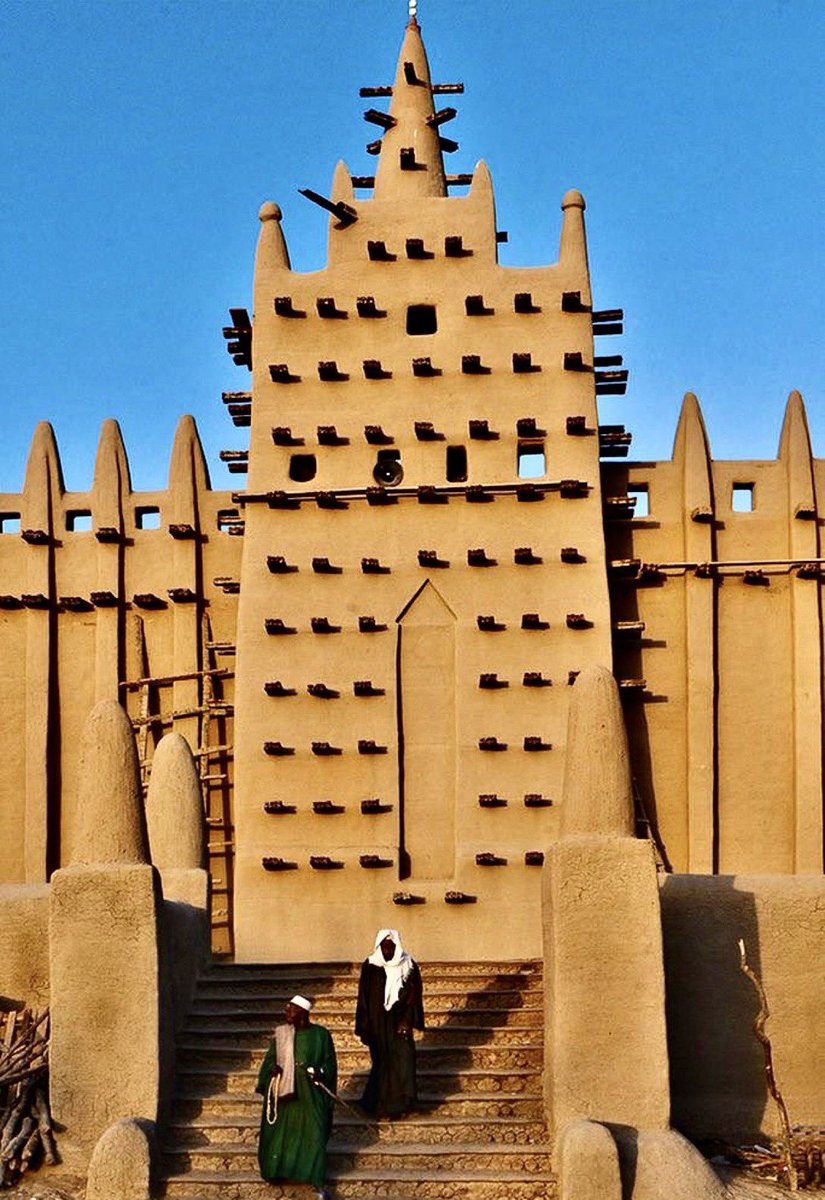
When Muslims pray, they turn towards Mecca. The Islamic term for this direction is qibla.
Islamic astronomers created Qibla Finders to indicate the direction prayer. They were objects of function as well as beauty.
Here are 17 exquisite Qibla Finders #JummahMubarak
A thread…
Islamic astronomers created Qibla Finders to indicate the direction prayer. They were objects of function as well as beauty.
Here are 17 exquisite Qibla Finders #JummahMubarak
A thread…

1/ Qibla Finder, 1582-1583 (990 AH) (990 AH), Egypt
Horizontal sundial, with a depiction of the Ka’ba in the centre.
Constructed for the latitude of Istanbul, this is one of the more unusual examples of instruments.
@britishmuseum
Horizontal sundial, with a depiction of the Ka’ba in the centre.
Constructed for the latitude of Istanbul, this is one of the more unusual examples of instruments.
@britishmuseum

2/ Qibla Finder, 19th century, Turkey
The inside of the box with a compass and compass rose in twelve directions, divided into degrees, with painted medallion view of the Al-Aqsa Mosque. This instrument, was made exclusively for Medina.
The inside of the box with a compass and compass rose in twelve directions, divided into degrees, with painted medallion view of the Al-Aqsa Mosque. This instrument, was made exclusively for Medina.

3/ Qibla Finder, possibly late 18th century or 19th century
View of the Holy Sanctuary at Mecca
Medium: lacquer-painted wooden base & lid & metal fittings
@KhaliliOnline
View of the Holy Sanctuary at Mecca
Medium: lacquer-painted wooden base & lid & metal fittings
@KhaliliOnline

4/ Qibla Finder, 19th century, Turkey
The interior of the base depicting the Ka'ba, encircled by names of various cities, the interior of the lid with a larger view of Mecca.
The interior of the base depicting the Ka'ba, encircled by names of various cities, the interior of the lid with a larger view of Mecca.

5/ Qibla Finder, 19th century, Turkey
The interior of the cover with the Kaaba at the centre surrounded by the maqams of the four Sunni schools of law with a view of Mecca. The base with a compass with cruciform steel needle and glazed cover.
The interior of the cover with the Kaaba at the centre surrounded by the maqams of the four Sunni schools of law with a view of Mecca. The base with a compass with cruciform steel needle and glazed cover.

6/ Qibla Finder, 1738–9, Sultanahmet, Istanbul, Turkey
The qiblanuma literally means 'showing the direction to the Ka'ba'. The inside lid shows, shows the minarets of the Masjid al-Haram in Mecca, with the Ka'ba in the courtyard
Museum of Turkish and Islamic Arts
The qiblanuma literally means 'showing the direction to the Ka'ba'. The inside lid shows, shows the minarets of the Masjid al-Haram in Mecca, with the Ka'ba in the courtyard
Museum of Turkish and Islamic Arts

7/ Qibla Finder, 19th century, Turkey
Inside of the cover painted with a central medallion representing aerial view of the al-Masjid al-Ḥarām mosque in Mecca. Inside of the box with a compass & painted medallion view of the Al-Aqsa Mosque. Made exclusively for Medina.
Inside of the cover painted with a central medallion representing aerial view of the al-Masjid al-Ḥarām mosque in Mecca. Inside of the box with a compass & painted medallion view of the Al-Aqsa Mosque. Made exclusively for Medina.

8/ Qibla Finder, 1700-1825, Turkey
Qibla Finders are used to find the direction and time of prayer by Muslim worshippers. According to the central tenets (or five pillars) of Islam Muslims must pray five times a day.
@BM_AG
Qibla Finders are used to find the direction and time of prayer by Muslim worshippers. According to the central tenets (or five pillars) of Islam Muslims must pray five times a day.
@BM_AG

9/ Qibla Finder, 19th century, Turkey
A white metal miniature bowl with cover engraved with a floral band around a central similar floral spray, the cover unscrewing to reveal the circular complete dial pivoting around the centre painted with the Ka’aba.
@ChristiesInc
A white metal miniature bowl with cover engraved with a floral band around a central similar floral spray, the cover unscrewing to reveal the circular complete dial pivoting around the centre painted with the Ka’aba.
@ChristiesInc

10/ Qibla Finder, 19th century, Turkey
The interior of the base with the Ka'ba at the centre surrounded by the maqams of the four Sunni schools of law, around these in small naskh are the names of various cities.
The interior of the base with the Ka'ba at the centre surrounded by the maqams of the four Sunni schools of law, around these in small naskh are the names of various cities.

11/ Qibla Finder, 19th century, Turkey
The interior of the base depicting the Ka'ba, encircled by names of various cities, the interior of the lid with a larger view of Mecca.
The interior of the base depicting the Ka'ba, encircled by names of various cities, the interior of the lid with a larger view of Mecca.

12/ Qibla Finder, 19th century, India
A small bone Mughal qibla finder with a view of Al-masjid Al-haram to the interior of the cover, the base with a compass with cruciform steel needle and glazed cover.
A small bone Mughal qibla finder with a view of Al-masjid Al-haram to the interior of the cover, the base with a compass with cruciform steel needle and glazed cover.

13/ Qibla Finder, 19th century, Turkey
The interior of the base depicting the Ka'ba, encircled by names of various cities, the interior of the lid with a larger view of Mecca.
The interior of the base depicting the Ka'ba, encircled by names of various cities, the interior of the lid with a larger view of Mecca.

14/ Qibla Finder, 19th century, Iran
A Persian lacquer Qibla indicator and sundial
of circular form, the lid and interior with patterns of interlaced floral and foliate motifs.
A Persian lacquer Qibla indicator and sundial
of circular form, the lid and interior with patterns of interlaced floral and foliate motifs.

15/ Qibla Finder, 19th century, Turkey
The interior of the base depicting the Ka'ba, the interior of the lid with a larger view of Mecca.
Courtesy of Millon
The interior of the base depicting the Ka'ba, the interior of the lid with a larger view of Mecca.
Courtesy of Millon

16/ Qibla Finder, 1883, Turkey
Rotating disc on the compass has a picture of the Kaaba. Around it are the names of the 4 points of the compass, on the opposite side, are a number of cities, extending from Tunis in the west to Samarkand in the east.
The David Collection
Rotating disc on the compass has a picture of the Kaaba. Around it are the names of the 4 points of the compass, on the opposite side, are a number of cities, extending from Tunis in the west to Samarkand in the east.
The David Collection

17/ Qibla Finder, AH 1151/1738 AD, Turkey
Made by Barun Al-Mukhtara, Constantinople. The base has a European map showing the landmass north of the equator with a magnetic compass, below with a list of countries and cities with their coordinates.
Made by Barun Al-Mukhtara, Constantinople. The base has a European map showing the landmass north of the equator with a magnetic compass, below with a list of countries and cities with their coordinates.

If you like this thread, check out our forthcoming Islamic Art & Culture Digital Festival happening online on 28 & 29 November.
Join us for a celebration of Islamic art, heritage & culture
Book your tickets - with Early Bird & Affordable ticket options: eventbrite.com/e/the-future-o…
Join us for a celebration of Islamic art, heritage & culture
Book your tickets - with Early Bird & Affordable ticket options: eventbrite.com/e/the-future-o…

• • •
Missing some Tweet in this thread? You can try to
force a refresh





















